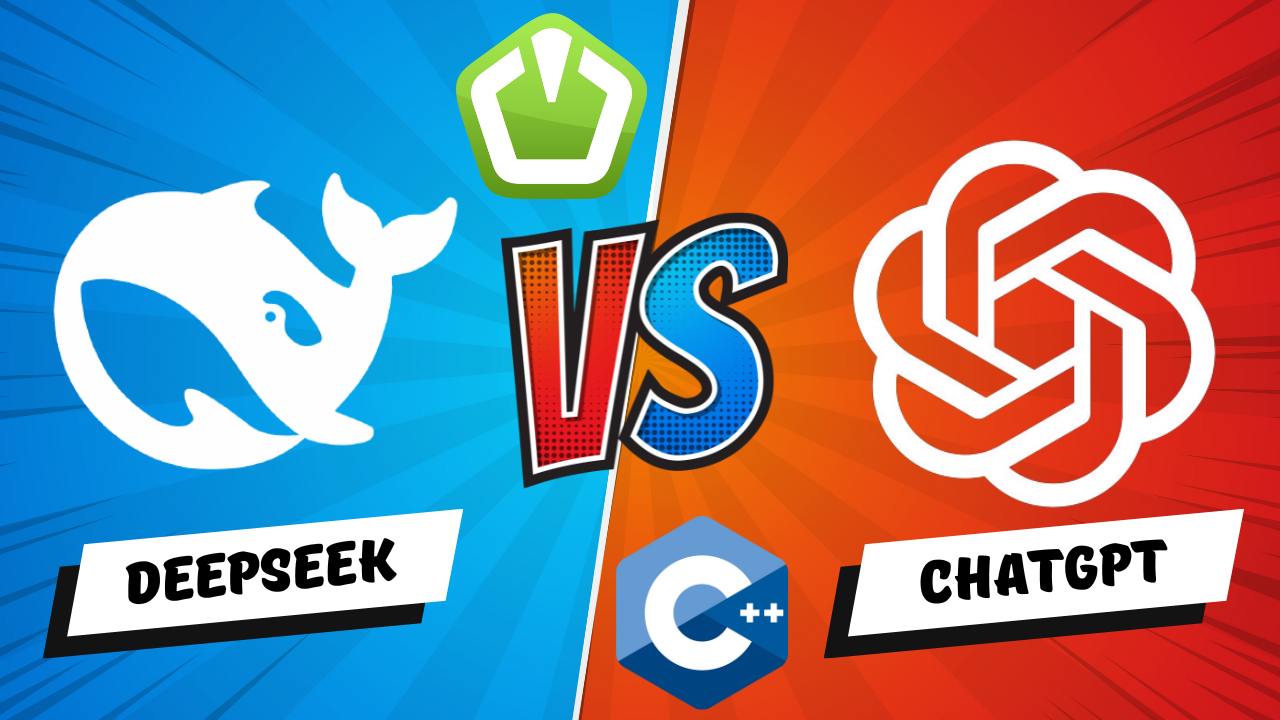
ChatGPT vs DeepSeek - AI Battle: Who Wrote the Better C++ Game?
ChatGPT o3-mini-high vs DeepSeek DeepThink R1 tested on a 2D platformer in C++ with SFML. See which AI wrote better code, gameplay, and procedural generation.
This is Rambod and in this experiment we pit two AI models against each other in February 2025: ChatGPT o3-mini-high vs DeepSeek DeepThink R1. Both were asked to build the same project — a 2D platformer in C++ with SFML. The challenge? Procedural infinite levels, basic physics, enemies you can jump on, and score tracking. Let’s see who coded it better.
1) The challenge
- Prompt: build a Mario-style 2D platformer with SFML.
- Requirements:
- Move left, right, and jump.
- Procedural infinite level generation.
- Enemies defeated by jumping on their heads.
- Score based on distance traveled.
Both AI models received this exact same task.
2) DeepSeek’s game
- Structure: similar to ChatGPT, but with notable issues.
- Gameplay problems:
- Platforms stopped generating at the screen edge.
- Enemies floated in midair instead of staying grounded.
- Distance tracking didn’t work properly.
- Overall: playable, but incomplete and buggy.
3) ChatGPT’s game
- Stronger implementation:
- Infinite level generation worked correctly.
- Jumping on enemies behaved as expected.
- Score tracking updated smoothly.
- Overall polish felt closer to a working prototype.
- Verdict: more structured and fun to play.
4) Testing setup
- Used VS Code with CMake and vcpkg.
- Installed SFML as a dependency through
vcpkg.json. - Compiled and ran both projects clean.
- Had to manually copy the Arial font for DeepSeek’s build to run.
5) The final verdict
Both AIs produced working C++ projects with SFML, but the results were very different:
- DeepSeek: weaker gameplay loop, broken procedural generation.
- ChatGPT: smoother controls, infinite levels, working enemies, playable experience.
👉 Winner: ChatGPT o3-mini-high.
Wrap up
This AI coding battle shows how differently models can solve the same problem. While both generated functional code, ChatGPT’s approach was more polished and complete.
Want to see more experiments like this with Raylib or SDL? Drop your suggestions in the comments.
For code and resources, check the GitHub Repository, visit rambod.net, subscribe on YouTube, or watch this AI coding challenge here: Watch on YouTube.